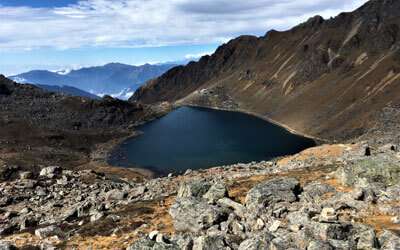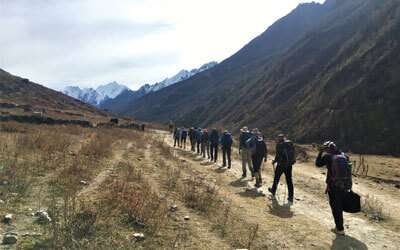The Langtang Valley trekking takes you to the exquisiteness of the mountainous region and its people, popularly known as the Tamangs, with their distinctive Himalayan lifestyle and beautiful Tibetan culture. This Epic Langtang Valley trek is an exceptional opportunity for both trekkers and nature lovers that offers anyone with thrilling wilderness experience mingled with exquisite local architecture, ancient monasteries, and extraordinary way of life.
Established in 1976 as the first Himalayan National Park Langtang lies directly to the north of Kathmandu with the extravagant landscape, soaring mountains, and deep gorges. Langtang’s proximity to the Tibetan border and the Kathmandu valley make it a very attractive and easily accessible trekking paradise. This best kept secret valley of Nepal is well renowned for beautiful scenery, wildlife, and beautiful alpine flowers. Langtang is a narrow valley that lies just south of the Tibetan border, it is sandwiched between the main Himalayan range to the north and a slightly lower range of snowy peaks to the south. This beautiful Langtang Trek provides you with a great opportunity to explore villages, visit the glaciers, lakes, explores wildlife, and climb many ridges for the view. Trekking in the region of Langtang is one of the most rewarding adventure activities in Nepal.
The people here are essentially Tibetans who migrated to Nepal and in course of time amended their ethnicity to ‘Tamangs’ and are so-called till date. Regardless of being reasonably less visited area, trekking here is pleasing, with untouched valleys and abundant flora and fauna. The trail takes you through the remote, untouched time-honored Tamang settlements with diverse terrains with a picturesque view of high summits including Ganesh Himal and Langtang Lirung (7227m).
Trekking through this magical Langtang valley is beyond belief which is considered one of the most beautiful valleys and it is in reality ‘a journey of a lifetime’. To value more of the local society of this astonishing region one can always enjoy the experience of home-stay in a few of the Tamang villages.


